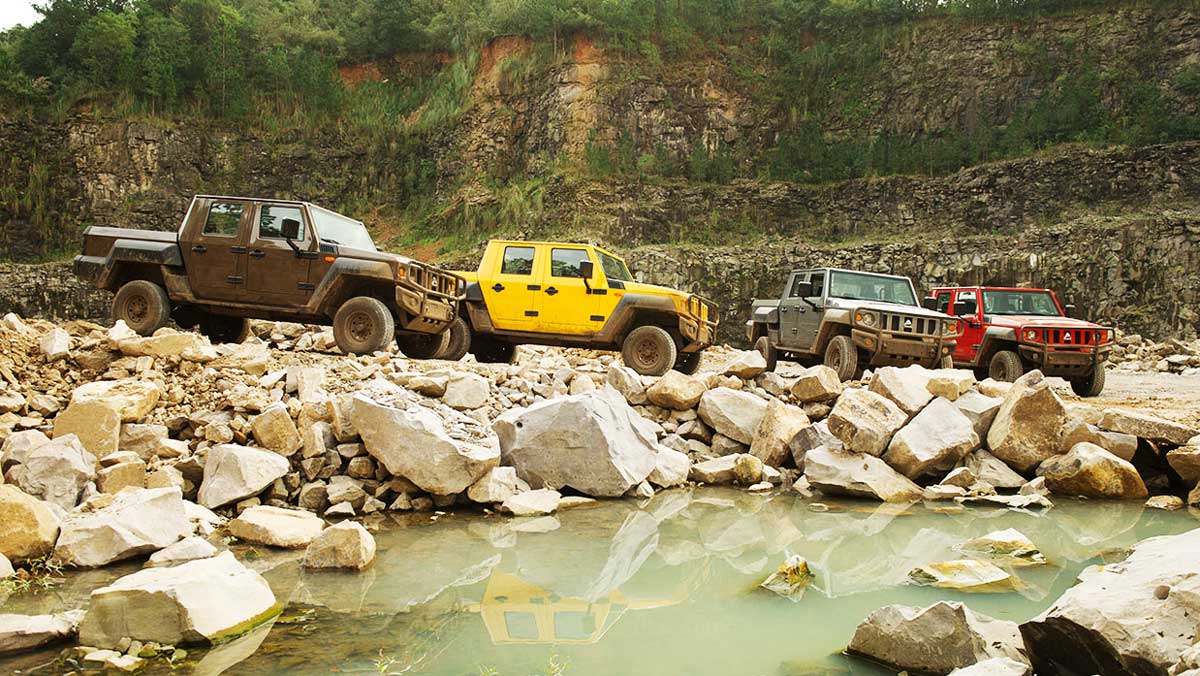A number of all-electric, heavy-duty vehicle prototypes made for the mining industry by Victorian-based Safescape will be deployed in coming months to several mines across Australia.
Safescape will provide a number of mining companies with 10 Bortana EV prototypes which it has been developing and testing over the last 12 months on three mine sites across Australia.
First revealed in May 2019, is the Bortana EV which has been built on the chassis of a diesel-powered Agrale Marruá and has already received favourable feedback from at least one testing site in Western Australia.
The deployment of the Bortana EV hopes to demonstrate that electric vehicles are just as sturdy and suitable for mining sites as the diesel vehicles that commonly service them, but without the damaging and dangerous particulate pollution.
“Our primary goals for doing site trials with the Bortana have been to prove to mining companies that electric light vehicles can be safely deployed within their operations, can do the same work without taking time out of the work day for charging and that operators enjoy driving it,” says Safescape managing director Steve Durkin.

The 10-year-old Bendigo company will supply its beta fleet via a leasing arrangement that will allow the companies to understand the advantages of using EV technology in their mines, whilst ensuring Safescape can monitor the vehicles to develop further knowledge on use and maintenance issues as they move to production during 2021.
Safescape has also received a $200,000 grant from the federal government’s Automatic Innovation Lab Access Grant which will enable the company to build a factory to scale up production.
“This funding will support the creation of a scaleable manufacturing capability including testing equipment, training, process improvement and ADR certification for road registration,” says Durkin.

Durkin says that challenges for acceptance of electric vehicles in the mining industry is not so different from the private passenger market.
“In one aspect underground mines are no different to the on-highway consumer market,” he says, as people with limited exposure to electric vehicles cite “range anxiety” as a major concern.
But Durkin says although mining vehicles are typically on call 24 hours a day and therefore slow charging over night is not an option, the Bortana EV deals with this issue by being able to fast charge via DC charging units but also to plug into existing mine electrical infrastructure via 25kW onboard charger.
“This means workers can charge the vehicle when they are stopped for work reasons rather than stopping specifically to charge the vehicle during their shift. The idea of taking time out of a shift to wait for a vehicle to charge is completely unacceptable for the mining industry.
“Operators have been pleasantly surprised that the Bortana EV prototype has been able to work through a full shift without charging even when being used in a mine that is more than 1km deep,” says Durkin.
Durkin also highlights the fact that the Bortana EV uses Australian–made batteries which have been designed specifically to suit the mining industry.
“3ME Technology have designed the batteries with a focus on safety, longevity and robustness, all of which are critical for long term viability of our vehicles in mining environments,” says Durkin.

Bridie Schmidt is associate editor for The Driven, sister site of Renew Economy. She has been writing about electric vehicles since 2018, and has a keen interest in the role that zero-emissions transport has to play in sustainability. She has participated in podcasts such as Download This Show with Marc Fennell and Shirtloads of Science with Karl Kruszelnicki and is co-organiser of the Northern Rivers Electric Vehicle Forum. Bridie also owns a Tesla Model Y and has it available for hire on evee.com.au.


